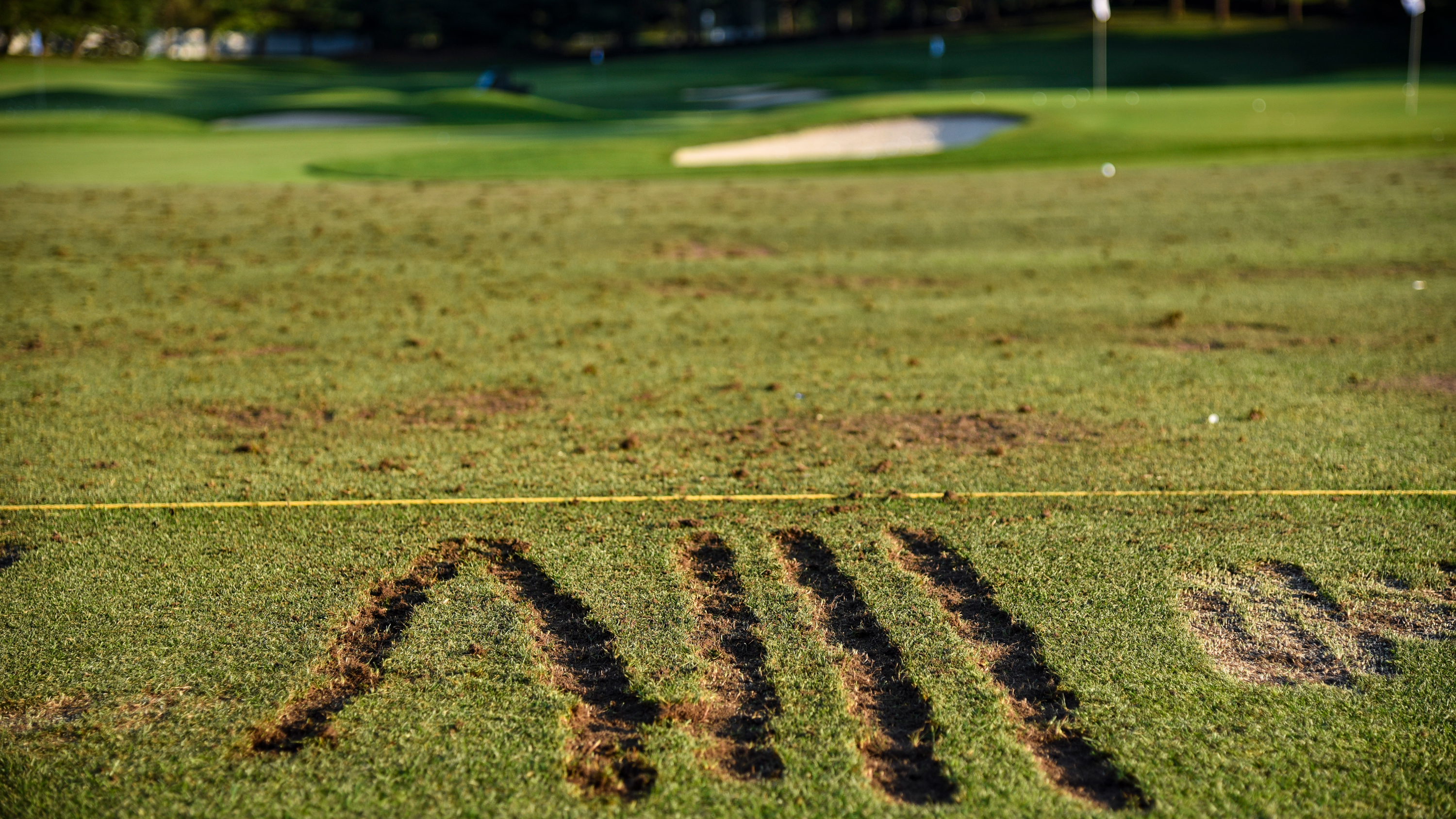What Is A Divot In Golf?
Here we explain what a divot is in golf, where the word comes from and whether or not it’s good to take one.


The word “divot” comes from Scots and was used as far back as the 1500s to describe a piece of turf or sod with the grass growing out of it – divots were generally used as roofing material.
In golfing parlance, the definition is similar – although perhaps not the roofing material bit. A divot is a strip of turf removed from the ground when playing a golf shot.
What Does It Mean To Take A Divot?

Tiger Woods taking a divot
Taking a divot is removing a piece of turf from the ground with the head of the golf club when hitting a golf ball.
When a player uses an iron club, they will generally take some sort of divot on each shot. The divot will tend to be larger the shorter the iron being used. That’s because the angle of attack into the ball becomes steeper as you move through the irons from, say 3-iron, where the longer club delivers a shallower angle into the ball, to a pitching wedge, where the angle is far steeper.

Professional divot marks on the practice ground
If a player makes good contact with the ball, the divot will be taken almost immediately after the ball and the turf will be removed in a straight line from there.
If the divot mark starts behind the ball, the player will have caught the ball “fat” and it won’t fly as far as expected. If the divot mark heads dramatically to the left or right, it suggests the player has not swung on the correct plane and the shot may be errant.
When using a driver or fairway wood, a good player will generally not expect to take a divot, unless attempting a particular type of punched shot.
Get the Golf Monthly Newsletter
Subscribe to the Golf Monthly newsletter to stay up to date with all the latest tour news, equipment news, reviews, head-to-heads and buyer’s guides from our team of experienced experts.
What Does Fixing A Divot In Golf Mean?

Paul Casey throws a divot back to his caddy for repair
People often refer to the hole left after a divot has been taken as the divot… It’s not technically correct as it’s really the divot hole or divot mark. But it’s now referred to frequently enough in that manner for it to have become an accepted description.
If a divot has been taken, then it’s the correct golfing etiquette to fix it. Particularly if taken from the fairway. That means, retrieving the divot and replacing it in the divot hole, probably pushing it back down with foot or club to encourage it to knit back into the turf. Some clubs will provide golfers with a container filled with a mix of grass seed and sand – They will ask golfers to fill divot holes with the mix rather than replacing the divot to encourage quick, new growth.
Should I Take A Divot With My Irons?

Sung-jae Im taking a divot
It depends on your swing path but, generally speaking, most players will take a divot of some sort with their irons. With a longer iron, a 3 or 4-iron this might be just a scuff mark over the top of the turf as the angle of attack into the ball is shallower. With a short iron or wedge, you might expect to take a larger divot as the angle of attack into the ball will be steeper.
Players with steeper swings will tend to take larger divots. If you have a swing with a shallower angle of attack, you might not take much divot at all. This does not mean you cannot hit clean, powerful golf shots. Many good players pick the ball more cleanly off the turf to great effect.

Fergus is Golf Monthly's resident expert on the history of the game and has written extensively on that subject. He has also worked with Golf Monthly to produce a podcast series. Called 18 Majors: The Golf History Show it offers new and in-depth perspectives on some of the most important moments in golf's long history. You can find all the details about it here.
He is a golf obsessive and 1-handicapper. Growing up in the North East of Scotland, golf runs through his veins and his passion for the sport was bolstered during his time at St Andrews university studying history. He went on to earn a post graduate diploma from the London School of Journalism. Fergus has worked for Golf Monthly since 2004 and has written two books on the game; "Great Golf Debates" together with Jezz Ellwood of Golf Monthly and the history section of "The Ultimate Golf Book" together with Neil Tappin , also of Golf Monthly.
Fergus once shanked a ball from just over Granny Clark's Wynd on the 18th of the Old Course that struck the St Andrews Golf Club and rebounded into the Valley of Sin, from where he saved par. Who says there's no golfing god?
-
 Rory McIlroy vs Bryson DeChambeau: Who Are We Picking To Win The 2025 Masters?
Rory McIlroy vs Bryson DeChambeau: Who Are We Picking To Win The 2025 Masters?We're set up for a blockbuster final day at Augusta National where Rory McIlroy and Bryson DeChambeau play together in the final group
By Elliott Heath Published
-
 The Masters Crystal Rory McIlroy Has Already Won At Augusta National This Week
The Masters Crystal Rory McIlroy Has Already Won At Augusta National This WeekMcIlroy leads going in to the final round at Augusta National, with the four-time Major winner already bagging some silverware before he looks to claim the Green Jacket
By Matt Cradock Published